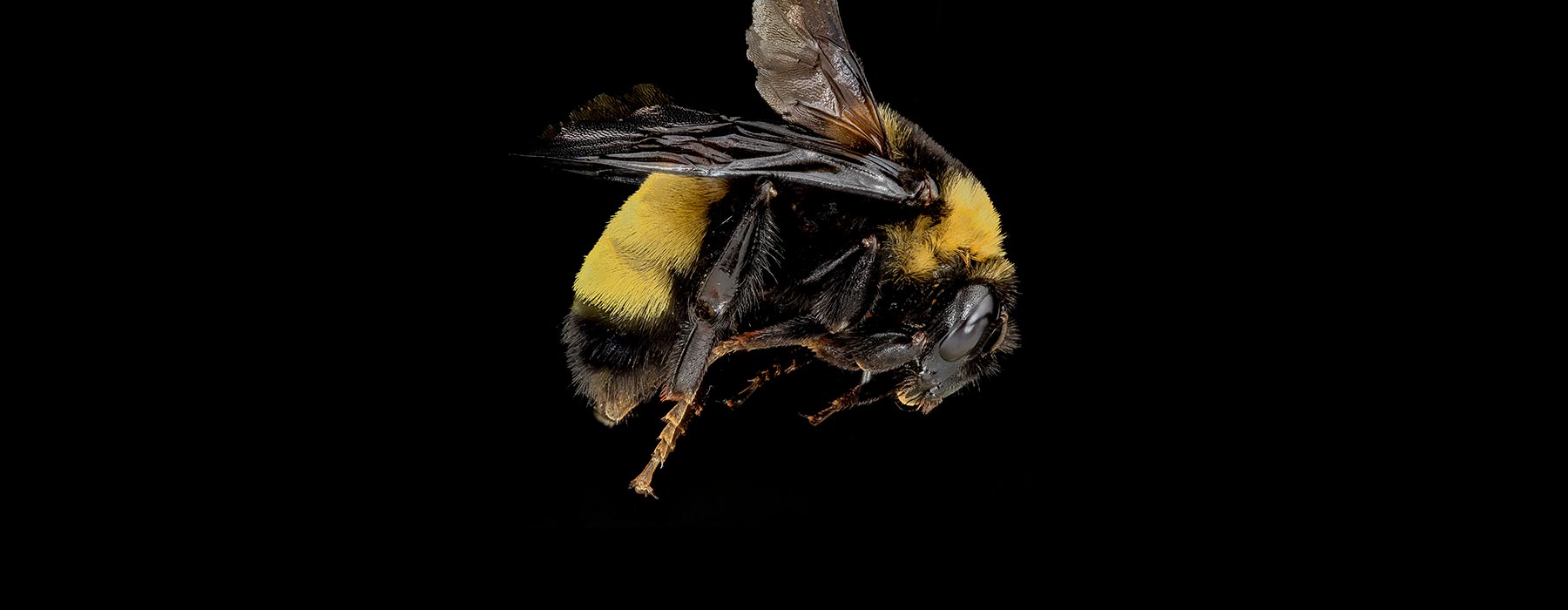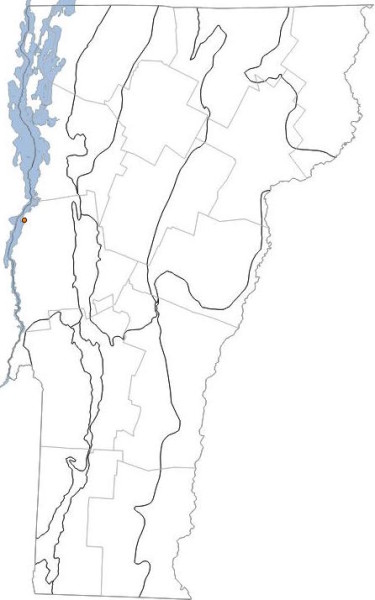Rare in Vermont and apparently restricted to the Champlain Valley. May require large hay fields with minimal management. There is only one record of Black and Gold Bumble Bee from Vermont. Leif Richardson collected a queen on 31 May 2006 at Button Bay State Park.
Unique in that the queen lays each egg into a separate cell, rather than laying batches of eggs into a single wax-pollen mass as is usual for the genus. Colony size is small, with only about 35 workers.
Select food plants: Bee balm (Monarda), Nightshades (Solanum), Clover (Trifolium), St. John’s Wort (Hypericum), Boneset (Eupatorium)
Tongue Length: long
Nest: surface
Parasitized by: unknown
Similar Species: B. pensylvanicus, B. terricola
General Phenology:
queens: April – October
workers: May – September
males: June – October
Extreme Vermont Dates:
queens: 31 May
workers: no data
males: no data








